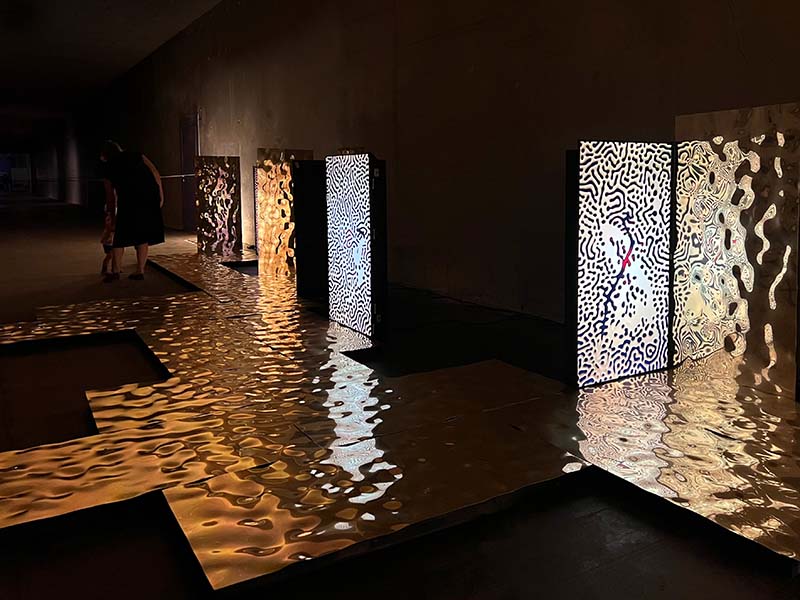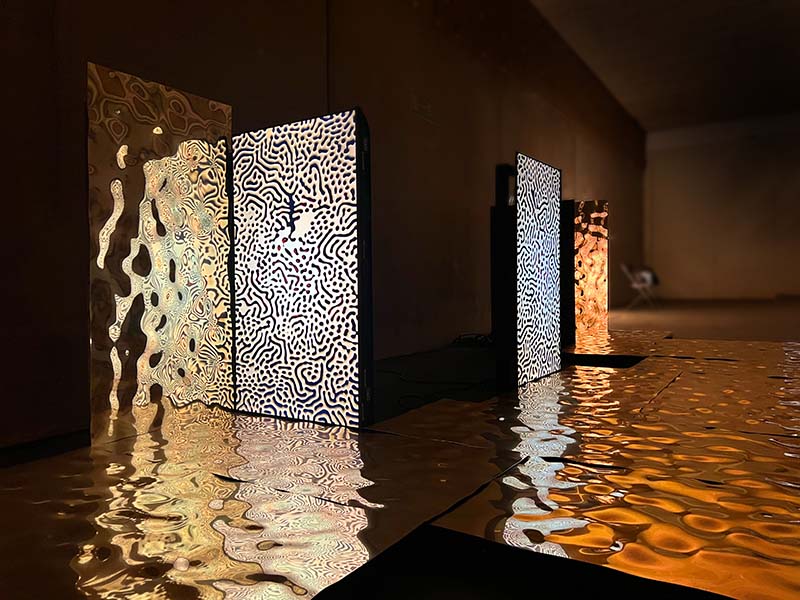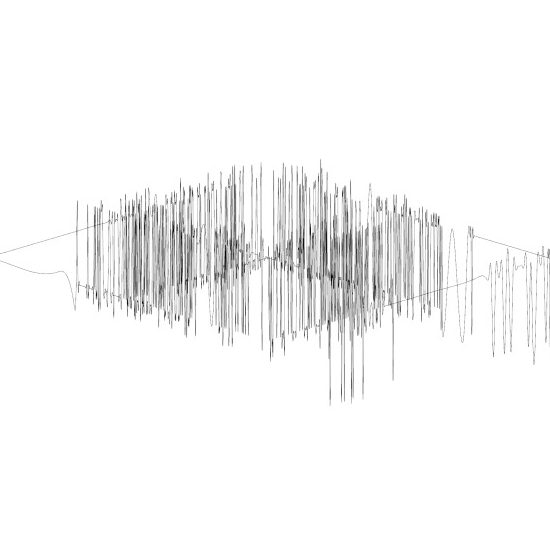proteus 4.1
templating in a cloud
4.1 version evolved its mode of interaction towards a web-based application using gaze-tracking in personal mobile devices and its architectural counterpart as a modular and non-site-specific installation embodying interactions happening fluently across the digital infrastructure in a single physical space.
As a direct reference to post-war architectural megastructures and the concept of ‘proteinic architecture’ from Yona Friedman in the 70’s last century, the installation mirrors the internet’s distributed nature by spatial articulations of scattered digital screens and mirrors in a modular manner. Reflections on rippled metal panels strengthen the immersive character of the installation and the golden material used drives us back to the greek mythology of Proteus and his ability to reveal precious secrets and truths upon capturing.
The installation takes the shape of a shimmering ocean pouring out in the gallery space as a recall of internet digital infrastructure and a natural habitat of our prophetic deity. The interactive visuals are based on the constantly changing behaviour of digitized ferrofluid, which conveys the idea of uncertainty in human interactions. Observing a slow-paced evolution of ferropatterns encourages AI-powered mindfulness to counter the digital age’s attention economy characterized by distraction and information overload.
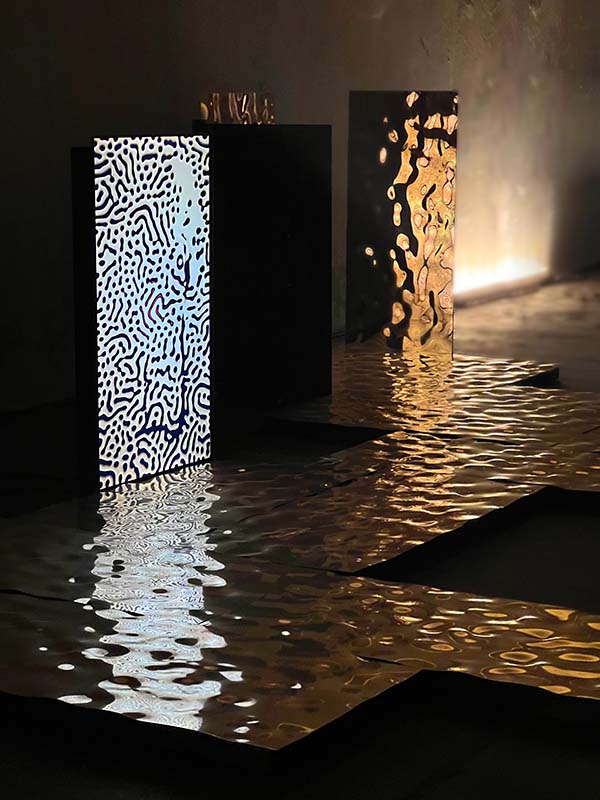
Exhibited at:
Ars Electronica Festival “HOPE” 2024 04-08.09.2024 &
ESC ” WHO IS PLAYING WITH US?” 28.09-15.11.2024
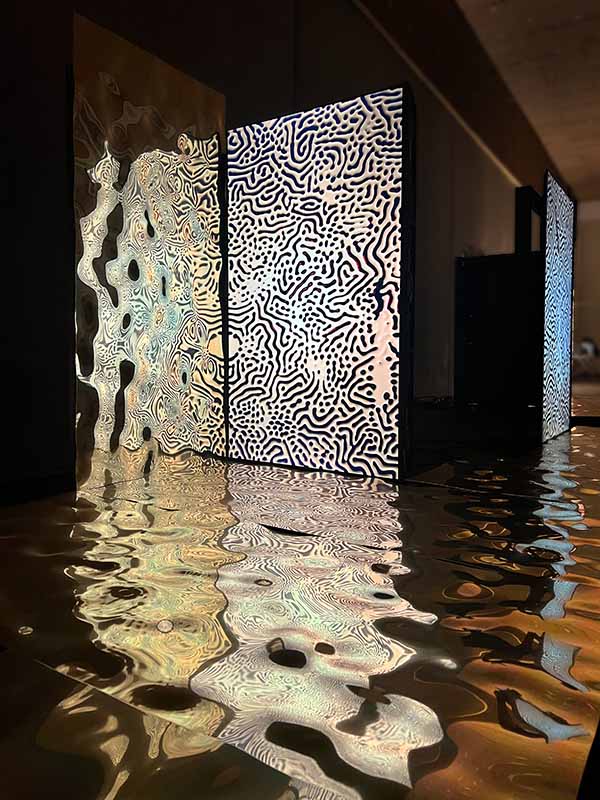
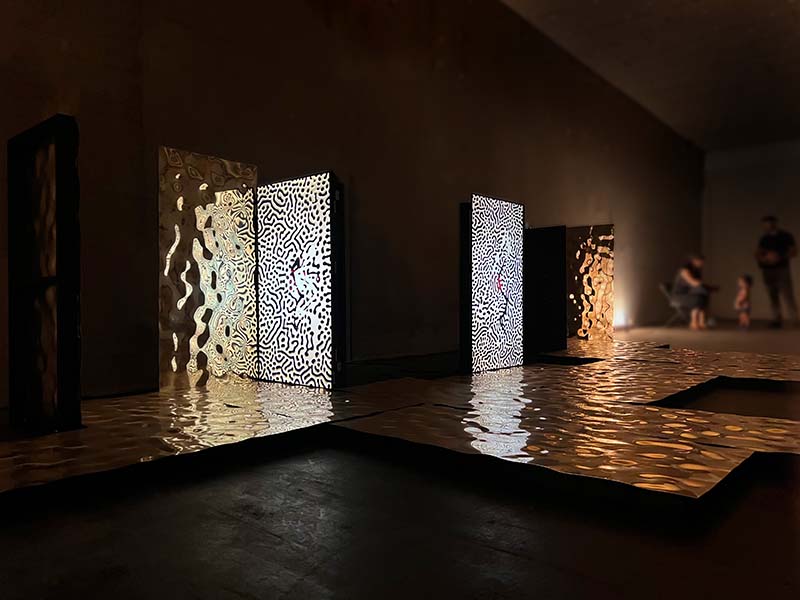
Credits:
Artists: Maria Smigielska (PL/CH), CompMonks (PL/CH)
Software development: Rostyslav Bohomaz, Mihael Giba, Juraj Komericki
Physical installation production 2023: William Linn
Physical installation production 2024: esc medien kunst labor and Ars Electronica
Interactive web-based reaction-diffusion based on the development by Linus Mossberg
This work was realised within the framework of a European Media Art Platform residency program at KONTEJNER | bureau of Contemporary Art Praxis with support from the Creative Europe Culture Programme of the European Union. The physical installation has been further developed in 2024 with the support from esc medien kunst labor and Ars Electronica.
